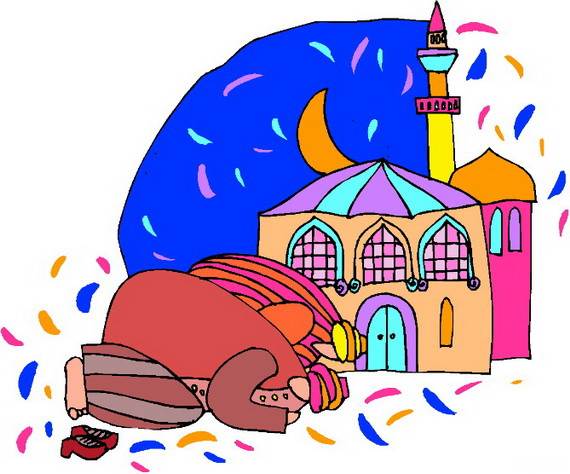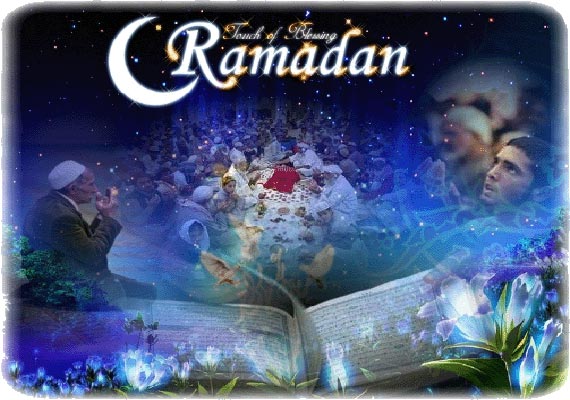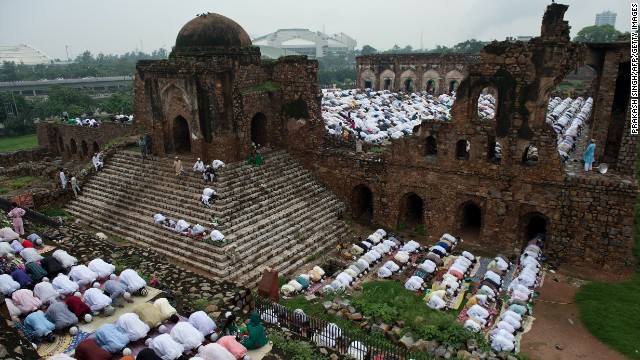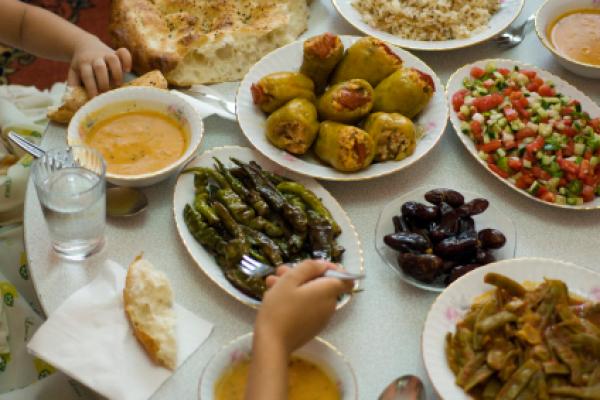Islamic Beliefs Biography
Source:- Google.com.pkIn the desert of Arabia was Mohammad born, according to Muslim historians, on April 20, 571. The name means highly praised. He is to me the greatest mind among all the sons of Arabia. He means so much more than all the poets and kings that preceded him in that impenetrable desert of red sand.
When he appeared Arabia was a desert — a nothing. Out of nothing a new world was fashioned by the mighty spirit of Mohammad — a new life, a new culture, a new civilization, a new kingdom which extended from Morocco to Indies and influenced the thought and life of three continents — Asia, Africa and Europe.
When I thought of writing on Mohammad the prophet, I was a bit hesitant because it was to write about a religion I do not profess and it is a delicate matter to do so for there are many persons professing various religions and belonging to diverse school of thought and denominations even in same religion. Though it is sometimes, claimed that religion is entirely personal yet it can not be gain-said that it has a tendency to envelop the whole universe seen as well unseen. It somehow permeates something or other our hearts, our souls, our minds their conscious as well as subconscious and unconscious levels too. The problem assumes overwhelming importance when there is a deep conviction that our past, present and future all hang by the soft delicate, tender silked cord. If we further happen to be highly sensitive, the center of gravity is very likely to be always in a state of extreme tension. Looked at from this point of view, the less said about other religion the better. Let our religions be deeply hidden and embedded in the resistance of our innermost hearts fortified by unbroken seals on our lips.
But there is another aspect of this problem. Man lives in society. Our lives are bound with the lives of others willingly or unwillingly, directly or indirectly. We eat the food grown in the same soil, drink water, from the same the same spring and breathe the same air. Even while staunchly holding our own views, it would be helpful, if we try to adjust ourselves to our surroundings, if we also know to some extent, how the mind our neighbor moves and what the main springs of his actions are. From this angle of vision it is highly desirable that one should try to know all religions of the world, in the proper sprit, to promote mutual understanding and better appreciation of our neighborhood, immediate and remote.
Further, our thoughts are not scattered as appear to be on the surface. They have got themselves crystallized around a few nuclei in the form of great world religions and living faiths that guide and motivate the lives of millions that inhabit this earth of ours. It is our duty, in one sense if we have the ideal of ever becoming a citizen of the world before us, to make a little attempt to know the great religions and system of philosophy that have ruled mankind.
In spite of these preliminary remarks, the ground in these field of religion, where there is often a conflict between intellect and emotion is so slippery that one is constantly reminded of fools that rush in where angels fear to tread. It is also not so complex from another point of view. The subject of my writing is about the tenets of a religion which is historic and its prophet who is also a historic personality. Even a hostile critic like Sir William Muir speaking about the holy Quran says that. “There is probably in the world no other book which has remained twelve centuries with so pure text.” I may also add Prophet Mohammad is also a historic personality, every event of whose life has been most carefully recorded and even the minutest details preserved intact for the posterity. His life and works are not wrapped in mystery.
My work today is further lightened because those days are fast disappearing when Islam was highly misrepresented by some of its critics for reasons political and otherwise. Prof. Bevan writes in Cambridge Medieval History, “Those account of Mohammad and Islam which were published in Europe before the beginning of 19th century are now to be regarded as literary curiosities.” My problem is to write this monograph is easier because we are now generally not fed on this kind of history and much time need be spent on pointing out our misrepresentation of Islam.
The theory of Islam and Sword for instance is not heard now frequently in any quarter worth the name. The principle of Islam that there is no compulsion in religion is well known. Gibbon, a historian of world repute says, “A pernicious tenet has been imputed to Mohammadans, the duty of extirpating all the religions by sword.” This charge based on ignorance and bigotry, says the eminent historian, is refuted by Quran, by history of Musalman conquerors and by their public and legal toleration of Christian worship. The great success of Mohammad’s life had been effected by sheer moral force, without a stroke of sword.
But in pure self-defense, after repeated efforts of conciliation had utterly failed, circumstances dragged him into the battlefield. But the prophet of Islam changed the whole strategy of the battlefield. The total number of casualties in all the wars that took place during his lifetime when the whole Arabian Peninsula came under his banner, does not exceed a few hundreds in all. But even on the battlefield he taught the Arab barbarians to pray, to pray not individually, but in congregation to God the Almighty. During the dust and storm of warfare whenever the time for prayer came, and it comes five times a every day, the congregation prayer had not to be postponed even on the battlefield. A party had to be engaged in bowing their heads before God while other was engaged with the enemy. After finishing the prayers, the two parties had to exchange their positions. To the Arabs, who would fight for forty years on the slight provocation that a camel belonging to the guest of one tribe had strayed into the grazing land belonging to other tribe and both sides had fought till they lost 70,000 lives in all; threatening the extinction of both the tribes to such furious Arabs, the Prophet of Islam taught self-control and discipline to the extent of praying even on the battlefield. In an aged of barbarism, the Battlefield itself was humanized and strict instructions were issued not to cheat, not to break trust, not to mutilate, not to kill a child or woman or an old man, not to hew down date palm nor burn it, not to cut a fruit tree, not to molest any person engaged in worship. His own treatment with his bitterest enemies is the noblest example for his followers. At the conquest of Mecca, he stood at the zenith of his power. The city which had refused to listen to his mission, which had tortured him and his followers, which had driven him and his people into exile and which had unrelentingly persecuted and boycotted him even when he had taken refuge in a place more than 200 miles away, that city now lay at his feet. By the laws of war he could have justly avenged all the cruelties inflicted on him and his people. But what treatment did he accord to them? Mohammad’s heart flowed with affection and he declared, “This day, there is no REPROOF against you and you are all free.” “This day” he proclaimed, “I trample under my feet all distinctions between man and man, all hatred between man and man.”
This was one of the chief objects why he permitted war in self defense, that is to unite human beings. And when once this object was achieved, even his worst enemies were pardoned. Even those who killed his beloved uncle, Hamazah, mangled his body, ripped it open, even chewed a piece of his liver.
The principles of universal brotherhood and doctrine of the equality of mankind which he proclaimed represents one very great contribution of Mohammad to the social uplift of humanity. All great religions have preached the same doctrine but the prophet of Islam had put this theory into actual practice and its value will be fully recognized, perhaps centuries hence, when international consciousness being awakened, racial prejudices may disappear and greater brotherhood of humanity come into existence.
Miss. Sarojini Naidu speaking about this aspect of Islam says, “It was the first religion that preached and practiced democracy; for in the mosque, when the minaret is sounded and the worshipers are gathered together, the democracy of Islam is embodied five times a day when the peasant and the king kneel side by side and proclaim, God alone is great.” The great poetess of India continues, “I have been struck over and over again by this indivisible unity of Islam that makes a man instinctively a brother. When you meet an Egyptian, an Algerian and Indian and a Turk in London, it matters not that Egypt is the motherland of one and India is the motherland of another.”
Mahatma Gandhi, in his inimitable style, says “Some one has said that Europeans in South Africa dread the advent Islam — Islam that civilized Spain, Islam that took the torch light to Morocco and preached to the world the Gospel of brotherhood. The Europeans of South Africa dread the Advent of Islam. They may claim equality with the white races. They may well dread it, if brotherhood is a sin. If it is equality of colored races then their dread is well founded.”
Every year, during the Haj, the world witnesses the wonderful spectacle of this international Exhibition of Islam in leveling all distinctions of race, color and rank. Not only the Europeans, the African, the Arabian, the Persian, the Indians, the Chinese all meet together in Medina as members of one divine family, but they are clad in one dress every person in two simple pieces of white seamless cloth, one piece round the loin the other piece over the shoulders, bare head without pomp or ceremony, repeating “Here am I O God; at thy command; thou art one and alone; Here am I.” Thus there remains nothing to differentiate the high from the low and every pilgrim carries home the impression of the international significance of Islam.
In the opinion of Prof. Hurgronje “the league of nations founded by prophet of Islam put the principle of international unity of human brotherhood on such Universal foundations as to show candle to other nations.” In the words of same Professor “the fact is that no nation of the world can show a parallel to what Islam has done the realization of the idea of the League of Nations.”
The prophet of Islam brought the reign of democracy in its best form. The Caliph Caliph Ali and the son in-law of the prophet, the Caliph Mansur, Abbas, the son of Caliph Mamun and many other caliphs and kings had to appear before the judge as ordinary men in Islamic courts. Even today we all know how the black Negroes were treated by the civilized white races. Consider the state of BILAL, a Negro Slave, in the days of the prophet of Islam nearly 14 centuries ago. The office of calling Muslims to prayer was considered to be of status in the early days of Islam and it was offered to this Negro slave. After the conquest of Mecca, the Prophet ordered him to call for prayer and the Negro slave, with his black color and his thick lips, stood over the roof of the holy mosque at Mecca called the Ka’ba the most historic and the holiest mosque in the Islamic world, when some proud Arabs painfully cried loud, “Oh, this black Negro Slave, woe be to him. He stands on the roof of holy Ka’ba to call for prayer.” At that moment, the prophet announced to the world, this verse of the holy QURAN for the first time.
“O mankind, surely we have created you, families and tribes, so you may know one another. Surely, the most honorable of you with God is MOST RIGHTEOUS AMONG you. Surely, God is Knowing, Aware.”
And these words of the holy Quran created such a mighty transformation that the Caliph of Islam, the purest of Arabs by birth, offered their daughter in marriage to this Negro Slave, and whenever, the second Caliph of Islam, known to history as Umar the great, the commander of faithful, saw this Negro slave, he immediately stood in reverence and welcomed him by “Here come our master; Here come our lord.” What a tremendous change was brought by Quran in the Arabs, the proudest people at that time on the earth. This is the reason why Goethe, the greatest of German poets, speaking about the Holy Quran declared that, “This book will go on exercising through all ages a most potent influence.” This is also the reason why George Bernard Shaw says, “If any religion has a chance or ruling over England, say, Europe, within the next 100 years, it is Islam”.
It is this same democratic spirit of Islam that emancipated women from the bondage of man. Sir Charles Edward Archibald Hamilton says “Islam teaches the inherent sinlessness of man. It teaches that man and woman and woman have come from the same essence, posses the same soul and have been equipped with equal capabilities for intellectual, spiritual and moral attainments.”
Islamic Beliefs Islam Facts For Kids Pictures About Religion Wikipedia And History And Beliefs Worksheet On Women Today And Information Images Wallpapers

Islamic Beliefs Islam Facts For Kids Pictures About Religion Wikipedia And History And Beliefs Worksheet On Women Today And Information Images Wallpapers
.jpg)
Islamic Beliefs Islam Facts For Kids Pictures About Religion Wikipedia And History And Beliefs Worksheet On Women Today And Information Images Wallpapers

Islamic Beliefs Islam Facts For Kids Pictures About Religion Wikipedia And History And Beliefs Worksheet On Women Today And Information Images Wallpapers
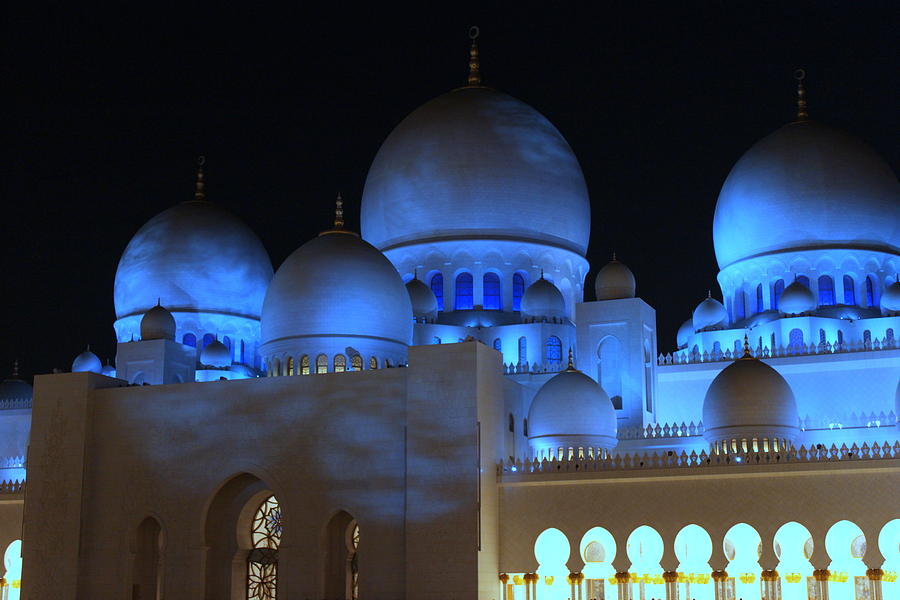
Islamic Beliefs Islam Facts For Kids Pictures About Religion Wikipedia And History And Beliefs Worksheet On Women Today And Information Images Wallpapers
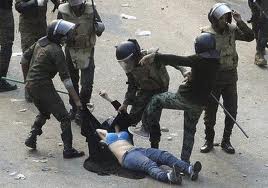
Islamic Beliefs Islam Facts For Kids Pictures About Religion Wikipedia And History And Beliefs Worksheet On Women Today And Information Images Wallpapers
Islamic Beliefs Islam Facts For Kids Pictures About Religion Wikipedia And History And Beliefs Worksheet On Women Today And Information Images Wallpapers

Islamic Beliefs Islam Facts For Kids Pictures About Religion Wikipedia And History And Beliefs Worksheet On Women Today And Information Images Wallpapers

Islamic Beliefs Islam Facts For Kids Pictures About Religion Wikipedia And History And Beliefs Worksheet On Women Today And Information Images Wallpapers
Islamic Beliefs Islam Facts For Kids Pictures About Religion Wikipedia And History And Beliefs Worksheet On Women Today And Information Images Wallpapers

Islamic Beliefs Islam Facts For Kids Pictures About Religion Wikipedia And History And Beliefs Worksheet On Women Today And Information Images Wallpapers
-u$m@n)
Islamic Beliefs Islam Facts For Kids Pictures About Religion Wikipedia And History And Beliefs Worksheet On Women Today And Information Images Wallpapers

Islamic Beliefs Islam Facts For Kids Pictures About Religion Wikipedia And History And Beliefs Worksheet On Women Today And Information Images Wallpapers

Islamic Beliefs Islam Facts For Kids Pictures About Religion Wikipedia And History And Beliefs Worksheet On Women Today And Information Images Wallpapers

Islamic Beliefs Islam Facts For Kids Pictures About Religion Wikipedia And History And Beliefs Worksheet On Women Today And Information Images Wallpapers

Islamic Beliefs Islam Facts For Kids Pictures About Religion Wikipedia And History And Beliefs Worksheet On Women Today And Information Images Wallpapers





















